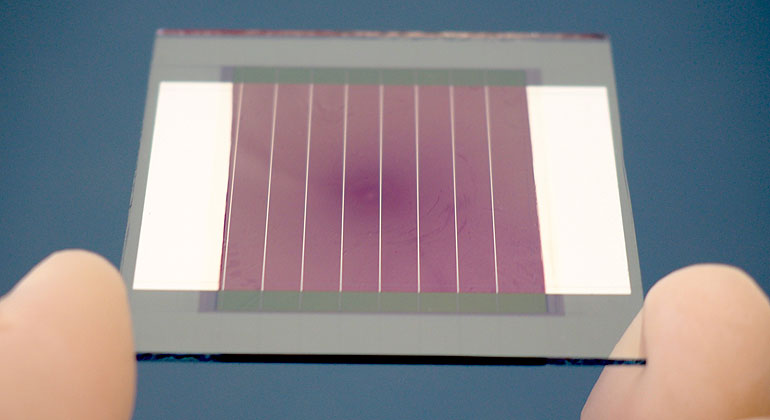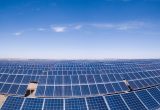Efficiency record for an organic PV mini module
Organic photovoltaics has considerable benefits, such as environmentally friendly production and flexible modules.
Yet, to promote market readiness, its efficiency must continue to be increased. Researchers at the Fraunhofer Institute for Solar Energy Systems ISE have achieved a certified efficiency value of 13.94 percent for a mini module, which is 9 square centimeters in size and has been created with organic solar cells. That’s a new world record in this category.
In September 2020, Fraunhofer ISE already broke a record for a cell that was 1 square centimeter in size. The research team has now combined nine of these organic solar cells to create a mini module and have achieved a record efficiency value for mini modules. Dr. Uli Würfel, Head of the Department Organic and Perovskite Photovoltaics at Fraunhofer ISE and lead researcher at the Freiburg Materials Research Center (FMF) at the University of Freiburg, is heading up the project: “We are really pleased at how the research is developing so positively and we’re optimistic that we will be able to make further improvements in the coming months.”
The potential of new organic absorber materials is first being tested on small areas in the lab, but now researchers must find ways to completely tap into this potential by creating efficient cells with larger areas. The ultimate goal is to use roll-to-roll methods, enabling solar modules to be produced in a similar manner as films.
In the current PV modules made of glass, the organic solar cells have been interconnected using laser structuring. “We were so pleased that it worked straightaway,” says Dr. Jan Nekarda, Head of the Department Production Technology — Structuring and Metallization at Fraunhofer ISE in regard to the process. “Now we’re working on continuing to minimize scribe width.”
The work has been conducted as part of an internal research project, which builds on the results of the project “H2OPV – Organic Photovoltaics to Cover Water Reservoirs”, which was funded by the German Federal Ministry for Economic Affairs and Energy (BMWi).







